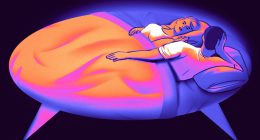
The virus can also spread by touching or sharing infected items like clothing and bedding, or by the respiratory droplets produced by sneezing or coughing, according to the W.H.O.
That may sound eerily familiar because in the early days of the pandemic many experts said that the coronavirus also had little human-to-human transmission beyond respiratory droplets and contaminated surfaces. Later research showed that the coronavirus can spread through much smaller particles called aerosols with the ability to travel distances greater than six feet. But that doesn’t mean the same will turn out to be true for the monkeypox virus, said Luis Sigal, an expert in poxviruses at Thomas Jefferson University in Philadelphia. The coronavirus is a tiny, single-stranded RNA virus, which may have aided its ability to become airborne. The monkeypox virus, however, is made of double-stranded DNA, which means that the virus itself is much larger and heavier and unable to travel as far, Dr. Sigal said.
Other routes of monkeypox transmission include from mother to fetus via the placenta or during close contact during and after birth.
The majority of cases this year have been in young men, many of whom self-identified as men who have sex with men, though experts are cautious about suggesting that monkeypox transmission may occur through semen or other bodily fluids exchanged during sex. Instead, contact with infected lesions during sex may be a more plausible route. “This is not a gay disease, as some people in social media have attempted to label it,” Dr. Andy Seale, an adviser with the W.H.O.’s H.I.V., Hepatitis and S.T.I.s Program, said during Monday’s Q&A. “Anybody can contract monkeypox through close contact.”
What are the symptoms and how bad can a monkeypox infection get?
Monkeypox is part of the same family of viruses as smallpox, but it is typically a much more mild condition, according to the Centers for Disease Control and Prevention. On average, symptoms appear within six to 13 days of exposure, but can take up to three weeks. People who get sick commonly experience a fever, headache, back and muscle aches, swollen lymph nodes and general exhaustion.
About one to three days after getting a fever, most people also develop a painful rash that is characteristic of poxviruses. It starts with flat red marks that become raised and filled with pus over the course of the next five to seven days. The rash can start on a patient’s face, hands, feet, the inside of their mouth or on their genitals, and progress to the rest of the body. (While chickenpox causes a similar-looking rash, it is not a true poxvirus, but is caused by the unrelated varicella-zoster virus).
Once an individual’s pustules scab over, in two to four weeks, they are no longer infectious, said Angela Rasmussen, a virologist at the Vaccine and Infectious Disease Organization at the University of Saskatchewan in Canada.
Source: NYT









